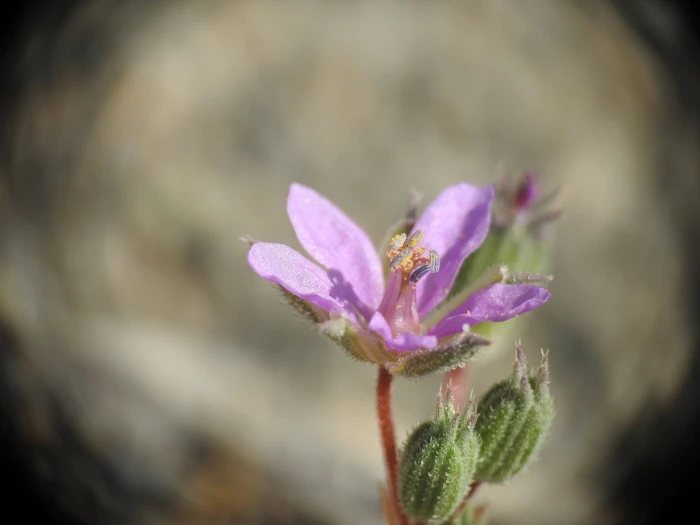Cutleaf Filaree
(Erodium laciniatum)
Cutleaf Filaree (Erodium laciniatum)
/
/

© Yves Bas
CC BY 4.0
Image By:
© Yves Bas
Recorded By:
Copyright:
CC BY 4.0
Copyright Notice:
Photo by: © Yves Bas | License Type: CC BY 4.0 | License URL: http://creativecommons.org/licenses/by/4.0/ | Uploader: yvesbas | Publisher: iNaturalist |

























Estimated Native Range
Climate Requirements for Brandon, Florida
| This Plant | Your Site | Plant Suitability for Your Location | ||
|---|---|---|---|---|
| • Precipitation | 0" - 47" | 50" | Aquatic | Aquatic |
| • High Temp. | 61°F - 116°F | 92°F | Your summer temperatures are normal for this plant. | Excellent |
| • Low Temp. | 16°F - 59°F | 50°F | Your winter temperatures are normal for this plant | Excellent |
This plant may not grow well at your location - your precipitation is too high.
Summary
Erodium laciniatum, commonly known as Cutleaf Filaree or Cutleaf Stork’s Bill, is a perennial herb native to the Mediterranean to Pakistan. It is a low-growing plant, typically reaching heights of 4-16 inches (10-40 cm) with a similar spread. Cutleaf Filaree has a distinctive appearance with deeply lobed leaves and small, showy flowers that are usually pink or purple, blooming from late winter to early spring. The plant is well adapted to its native dry habitats, often found in open areas with well-drained soils.
Erodium laciniatum is valued for its drought tolerance and its ability to thrive in poor, sandy soils, making it suitable for xeriscaping and rock gardens. It is also used in wildflower meadows where its showy flowers can attract pollinators. In cultivation, it requires minimal water once established, prefers full sun to part shade, and is tolerant of a range of soil types, provided they are well-drained. While not commonly found in nurseries, it can be grown from seed and is occasionally available from specialty native plant suppliers. Potential problems include root rot in overly moist conditions and susceptibility to rust and mildew in humid climates. It is not known to be invasive when grown outside its native range, but care should be taken to prevent self-seeding in areas where it could outcompete native species.CC BY-SA 4.0
Erodium laciniatum is valued for its drought tolerance and its ability to thrive in poor, sandy soils, making it suitable for xeriscaping and rock gardens. It is also used in wildflower meadows where its showy flowers can attract pollinators. In cultivation, it requires minimal water once established, prefers full sun to part shade, and is tolerant of a range of soil types, provided they are well-drained. While not commonly found in nurseries, it can be grown from seed and is occasionally available from specialty native plant suppliers. Potential problems include root rot in overly moist conditions and susceptibility to rust and mildew in humid climates. It is not known to be invasive when grown outside its native range, but care should be taken to prevent self-seeding in areas where it could outcompete native species.CC BY-SA 4.0
Plant Description
- Plant Type:
- Height: 0.5-1.5 feet
- Width: 0.5-1.5 feet
- Growth Rate: Moderate
- Flower Color: Pink
- Flowering Season: Spring, Summer
- Leaf Retention: Evergreen
Growth Requirements
- Sun: Full Sun, Part Shade
- Water: Low
- Drainage: Fast, Medium
Common Uses
Drought Tolerant, Low Maintenance, Rock Garden
Natural Habitat
Arid grasslands and desert regions from the Mediterranean to Pakistan
Other Names
Common Names: Cut-leaved Heron’s Bill
Scientific Names: Erodium laciniatum , Erodium affine , Erodium alexandrinum , Erodium botrys , Erodium chium , Erodium chium f. hispidum , Erodium chium var. laciniatum , Erodium chium var. soluntinum , Erodium decipiens , Erodium decipiens
GBIF Accepted Name: Erodium laciniatum